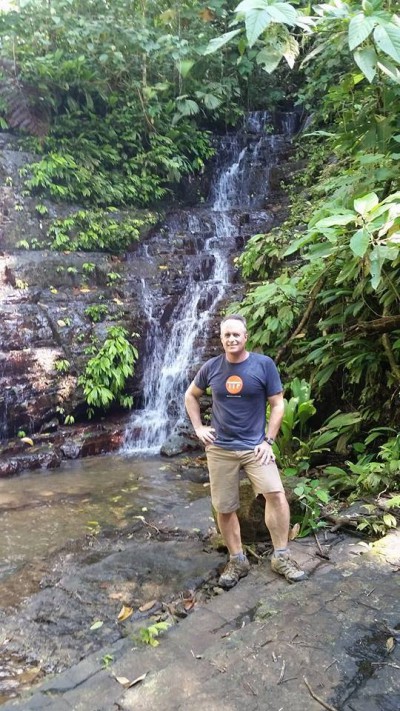
I’ll never forget a phone conversation I had with my husband James, back in the days when he was traveling a lot for work. He’d gone to Brazil on business, keenly looking forward to seeing the sights while there. But he’d called, despondent; his problematic knee hurt so badly, causing him to limp, that people had expressed concern. He couldn’t walk without intense pain, cutting his sight-seeing activities down significantly.
Fast forward two years. The man who limped, missed outings, and had limited, painful movement took on a local fitness competition that involved a variety of events — several based on NFL combines — with directional shifts, sprints, and leaping. He’s running these days. On our last family vacation to Costa Rica, he climbed mountain trails and navigated waterfall pathways with ease.
James has had one of the most amazing fitness transformation journeys I’ve ever seen, and I am so proud of him.
Here’s how he did it.
6 Steps to Physical Transformation
Step 1: Commitment
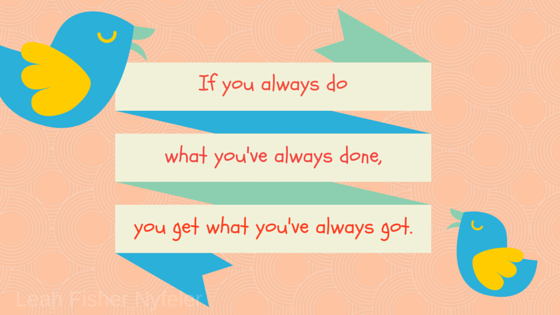 That incident (and many others like it) pushed James to take a serious look at his physical health, and he wasn’t happy with what he saw. Stress, business travel, poor eating habits, and working behind a desk had taken their toll. He’d been seeing a doctor about that problematic knee, and, aside from the occasional steroid shot, the prescribed course of action was postponing knee replacement for as long as humanly possible. The diagnosis was that early onset osteoarthritis was taking its slow, inevitable toll.
That incident (and many others like it) pushed James to take a serious look at his physical health, and he wasn’t happy with what he saw. Stress, business travel, poor eating habits, and working behind a desk had taken their toll. He’d been seeing a doctor about that problematic knee, and, aside from the occasional steroid shot, the prescribed course of action was postponing knee replacement for as long as humanly possible. The diagnosis was that early onset osteoarthritis was taking its slow, inevitable toll.
One day I was walking with a friend, who described similar problems with her knee but her physician, Dr. Carolyn Hyde, was taking a different treatment tack. I relayed the information to James, who decided to get a second opinion. This doctor started from square one, as though James came with no medical history, which meant she requested an MRI.
When Dr. Hyde called to report her findings, our collective minds were blown. The hard lump on the back of his knee — the one that, for years, had made it impossible to fully bend the leg — was not a Baker’s cyst, as previously diagnosed. While James did have early onset osteoarthritis, his real problem was synovial chondromatosis, a rare condition where extra bits of cartilage in the knee materialize and calcify. These myriad hard bits, varying from minuscule to golf-ball sized, were inhibiting his movement and causing pain. The good news (and bad news) was that surgery was required to clear those benign tumors from his knee.
Step 2: Planning
 Being a methodical and organized person who loves a “to do” list, James thought strategically about his next steps. He wanted to go into surgery at a lower weight, which would improve his post-operative physical therapy. To that end, he chose a local nutritionist, Carly Pollack, owner/founder of Nutritional Wisdom, to guide his dietary changes. He set up a series of regular meetings with her, which he etched in stone on his calendar.
Being a methodical and organized person who loves a “to do” list, James thought strategically about his next steps. He wanted to go into surgery at a lower weight, which would improve his post-operative physical therapy. To that end, he chose a local nutritionist, Carly Pollack, owner/founder of Nutritional Wisdom, to guide his dietary changes. He set up a series of regular meetings with her, which he etched in stone on his calendar.
He also recognized that exercising to the best of his ability prior to surgery would help with physical recovery and set ground work for measuring subsequent improvement. Thinking over the kind of workouts he liked to do, his schedule availability, and optimal locations, he joined Pure Austin Fitness and committed to working with a trainer, Jill Zahn, who also had a PT background. (Later, when Zahn needed to take time off for surgery of her own, James transitioned to working with trainer Ashley Atwood, who has seen him through to this year’s competition.)
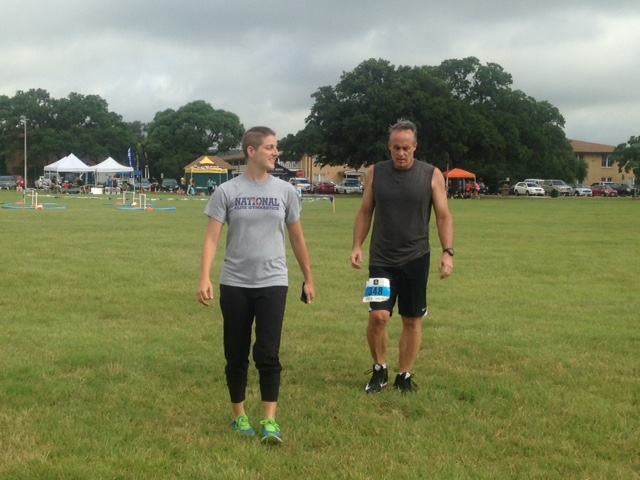
The biggest decision was a doozy: taking a year off from work to focus on getting in the best physical shape of his life. The plan: He’d have his surgery at leisure and make diet, exercise, and recovery the focus of his days, free from stress. I was fully behind him making the change, so happy that this time in our lives allowed such freedom; an empty nest, health insurance and salary through my job, and only modest budgetary needs.
Step 3: Healing
 The various components of James’ “year of fitness” were in place when he left his job in April 2014.
The various components of James’ “year of fitness” were in place when he left his job in April 2014.
Knee surgery with an orthopedic oncologist, Dr. Ronald Williams, was scheduled for the end of the month.
We’d planned so that I could get the May issue of Austin Fit Magazine safely to the printer mid-month and then spend time helping at home as needed.
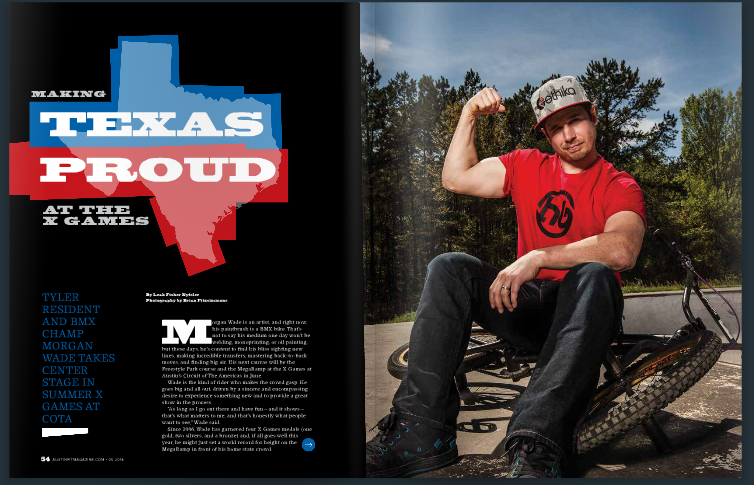
The surgery involved two incisions, necessitating that James be turned over in the course of the procedure: one cut down the front of the knee and another in the back. Dr. Hyde was assisting Dr. Williams — she’d wanted his particular expertise due to the artery involved and the fact that this was a fairly rare condition.
When Dr. Williams came into the waiting room to talk to me afterward, he was practically giddy: “I took out hundreds of those things; he’s scraped clean. I had a bowl-full this big,” he said, smilingly cupping his hands while I gaped, incredulous.
James came out of surgery with a big straight scar on the front and an even bigger S-shaped incision on the back. While we’ve forgotten the exact number, there were more than 40 and less than 80 total staples closing up the wounds.
For the next few months, James was simply committed to caring for his incision (there were some shots to the stomach, support stockings to wear, and wound maintenance to perform) and working PT to the best of his ability. Oh, and maintaining his healthy nutrition with Pollack.
Step 4: Goals
 James was smart; he knew that without some sort of measurable in his quest for improved fitness, he could easily lose focus. So he decided to set a goal, and he picked one that was close to home: the AFM Fittest. After all, I’d been involved with this event from the beginning and was pretty evangelical about sharing test designer and international fitness expert Diane Vives’ dream of building an aspirational and inspirational event to promote objective, measurable improvements to total fitness. Austin Fit Magazine was the perfect platform, and I enjoyed all the aspects of my job that related to the competition, which included promotion, participation, and volunteering.
James was smart; he knew that without some sort of measurable in his quest for improved fitness, he could easily lose focus. So he decided to set a goal, and he picked one that was close to home: the AFM Fittest. After all, I’d been involved with this event from the beginning and was pretty evangelical about sharing test designer and international fitness expert Diane Vives’ dream of building an aspirational and inspirational event to promote objective, measurable improvements to total fitness. Austin Fit Magazine was the perfect platform, and I enjoyed all the aspects of my job that related to the competition, which included promotion, participation, and volunteering.
The 2015 event, to be held in June, was the perfect distance out for James — he could fully recover from surgery and then work to improve his physical capability. He determined to use the competition as a benchmark to measure his improvement.
Step 5: Work
 More than a year is a long time to work toward an athletic goal. It takes real commitment to give up time to training. Maintaining a competition diet is hard. Putting yourself out there day after day, week after week, when you may not always feel like a workout can be taxing.
More than a year is a long time to work toward an athletic goal. It takes real commitment to give up time to training. Maintaining a competition diet is hard. Putting yourself out there day after day, week after week, when you may not always feel like a workout can be taxing.
I know — I’ve done it often enough.
But James preserved and focused. He met monthly with Pollack. He worked out twice a week with Atwood at Pure Austin. He selected David Braswell’s Saturday morning prep class for event-specific training (a smart move, as Braswell, owner and founder of Outright Fitness Speed & Performance Training, was the previous year’s overall male winner).
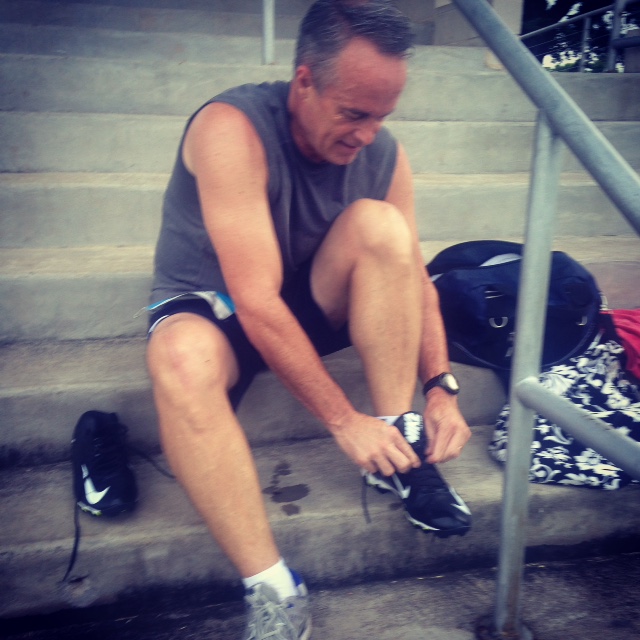
It was hard work.
PT had given him to a new level of flexibility in his knee, but it was stretching and strengthening with Atwood that got him sprinting.
Every week saw new improvements; every month saw him shrinking in size. In a year, he’d made startling transformations.
When he showed up on event morning, part of the 50–59 age group, he looked younger than he had five years ago.
Step 6: Performance
 Sure, James was nervous the day of the event. I was there to cheer (and carry his stuff) and he was pleased and surprised when Atwood came out to support and coach. The three of us progressed as a unit through the 12 events of the competition.
Sure, James was nervous the day of the event. I was there to cheer (and carry his stuff) and he was pleased and surprised when Atwood came out to support and coach. The three of us progressed as a unit through the 12 events of the competition.
I have to say that it was something special to share the moment with Atwood. She was invaluable to James’ success — she provided the right reinforcement, necessary no-nonsense guidance, and insightful tips. She reminded him of his strengths. A good trainer/athlete relationship is a wonderful thing, and I can fully appreciate that because I’ve been lucky enough to have that myself.
In most events, James met or exceeded expectations. Adding in the two mystery events did change some projected outcomes — 45 seconds of battle rope slinging is going to directly affect the following event’s pull-up count, just as 10 over-unders immediately prior to running the mile will throw a wrench into pacing.
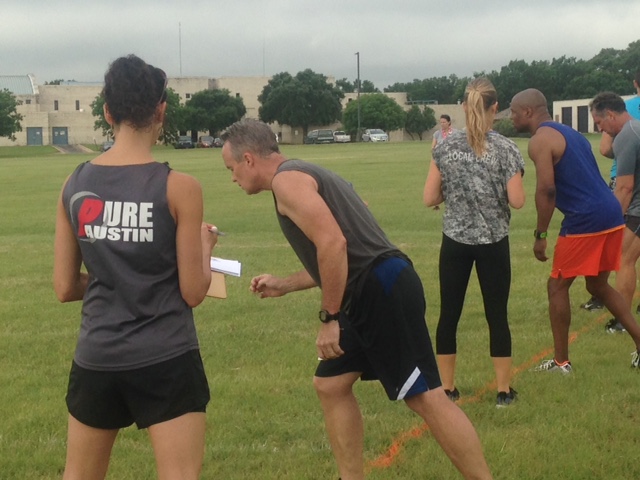
It’s the Journey, Not Just Results
 It takes guts to try a new physical activity at 54. And it’s nerve-wracking to be one of only 13 age-group competitors. It takes balls to set your sights on a fitness event when you’re most likely the only guy in the bunch who, just one year earlier, could barely walk. I don’t think I’ve ever been prouder than I was watching my husband gut out the 1-mile run, the last event and the one he dreaded with a passion. It’s hard to hold onto the fact that you’re lucky to even be running when you’re racing in front of a crowd.
It takes guts to try a new physical activity at 54. And it’s nerve-wracking to be one of only 13 age-group competitors. It takes balls to set your sights on a fitness event when you’re most likely the only guy in the bunch who, just one year earlier, could barely walk. I don’t think I’ve ever been prouder than I was watching my husband gut out the 1-mile run, the last event and the one he dreaded with a passion. It’s hard to hold onto the fact that you’re lucky to even be running when you’re racing in front of a crowd.
But as I’ve always said, true courage doesn’t lie in that final finish. It’s shown in undertaking the journey. The culminating competition is merely the cherry on top of what should be a veritable sundae of effort. If you’re not fully exulting in the process, finding joy as you go, then the battle — no matter how well fought or what the results — isn’t worth much.
Watching my husband take on hard work and find accomplishments in every forward step over the course of the past year has inspired me to live more boldly. He’s helped me make dietary changes, and we’re both enjoying the fruits of more healthful eating. The results he’s realized from working with his trainer inspire me to change up my routine. We’ve even made plans to run together — to help realize his new improvement goals and provide some active “couple time” in the process.
While I know James has a somewhat different take on the actual competition and its results, his performance was, in my eyes, a stellar success.
Most of all, I’m so proud of him for realizing that commitment to live his best possible life and then seeing it through.




0 thoughts on “Finding Workout Motivation at Home”